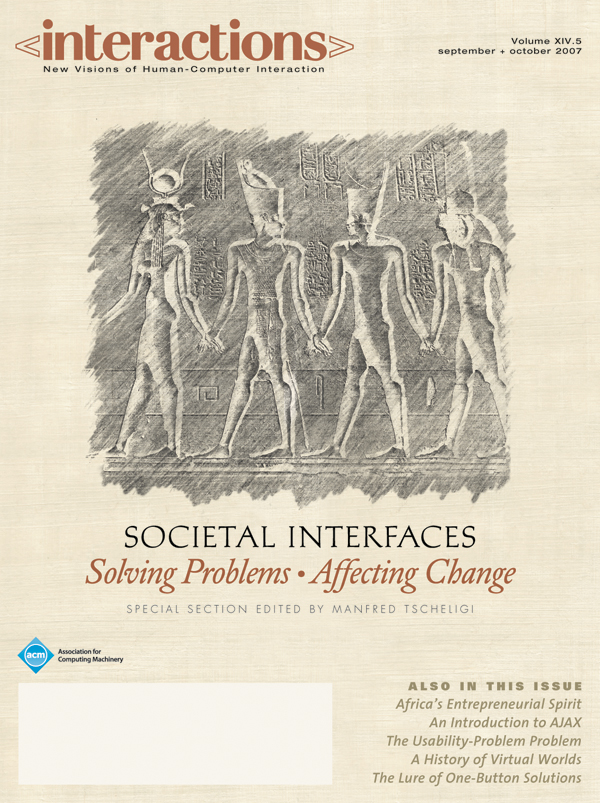Authors:
Peter Raemy, Robert Ruprecht
Mass transportation has grown over the past few decades. Commuting by public transport is a phenomenon that seems to be spreading daily. In this context of travel, information has improved a lot. While there are fewer people physically present to produce information for lost travelers, there is much more information providedeven on bus stops and inside carsthan there was only a few years ago. In train stations, travelers are informed orally and optically; visually disabled people are guided by thick lines to their point of destination, and railings are marked with Braille dots to tell them whether they are…
You must be a member of SIGCHI, a subscriber to ACM's Digital Library, or an interactions subscriber to read the full text of this article.
GET ACCESS
Join ACM SIGCHIIn addition to all of the professional benefits of being a SIGCHI member, members get full access to interactions online content and receive the print version of the magazine bimonthly.
Subscribe to the ACM Digital Library
Get access to all interactions content online and the entire archive of ACM publications dating back to 1954. (Please check with your institution to see if it already has a subscription.)
Subscribe to interactions
Get full access to interactions online content and receive the print version of the magazine bimonthly.







Post Comment
No Comments Found